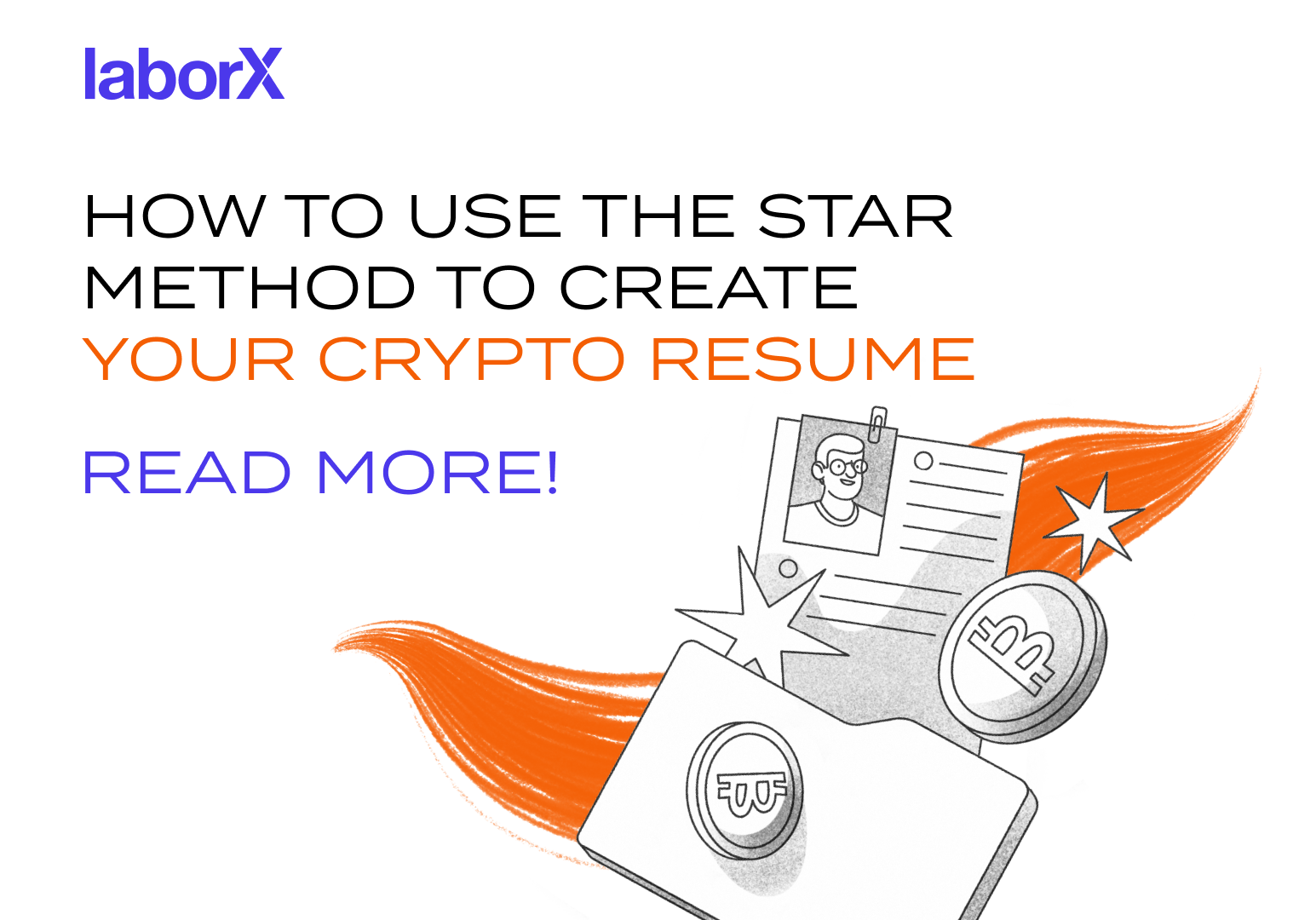
Embracing Change: HR in the World of Digital Assets
Hotcoin’s HR shares her journey from traditional industries to the world of Web3 and crypto, highlighting key insights on thriving in this space.
Read
How you solve problems in your job is a common theme in interviews, and answering these questions well can help you effectively show prospective employers your strengths.
Recruiting a candidate for a vacancy is a high-risk, high-reward undertaking for businesses, especially in the crypto sector. Find the right employee, and they will add tremendous value to the company. The wrong one, conversely, can be a liability.
Employers are therefore keen to gain as much information as possible about those they consider for a role. They will also be aware that finding the right fit for their company is about far more than technical expertise or hard skills. Soft skills – empathy, interpersonal relationships, time management, listening, and communication skills, to name a few – are almost as important.
How do employers gain a large volume of information about a candidate in a short time, across multiple relevant areas?
Or, looking at it from the other side of the coin, how do you, as a job seeker, set yourself apart from the competition and communicate to an employer that you are the right person for the job?
The STAR method has emerged as a popular format for both employers and candidates to learn and communicate prospective employees’ most important and relevant strengths. Here’s what it is, and how you can use it in interviews, as well as on your VC, LinkedIn, LaborX profile, and more.
STAR is an acronym for four words, which provide a method for explaining how you have shown your core competencies in a specific set of circumstances in the past:
STAR offers a kind of roadmap for narrating a story of how you acted in a particular setting:
The setting, and the task – and consequently the actions and results – can be almost anything. They can relate to your technical expertise, your people skills, your ability to solve problems, and so on.
The great thing is that you can take this format and use it in a wide range of circumstances – changing the amount of information you include depending on how much time and space you have to grab the audience’s attention.
One of the most useful settings in which you are able to use the STAR approach is a job interview, when you are asked a question that doesn’t have a straightforward or closed answer. This is important, because alongside technical questions, and ones that showcase your skill set, you will very likely be asked questions that require a more creative or imaginative response.
For example, you might be asked to describe how you dealt with a situation in which you needed to complete a task that lay outside your area of expertise. Another common example is a question about dealing with conflict in the workplace – for instance, a time when you had to deal with a colleague you found difficult.
If an interviewer asks you something like this and you’re not prepared, you can feel put on the spot and not show your best side. The STAR method provides a way to present a brief but comprehensive answer to questions that can otherwise be challenging to answer. For example:
The interviewer asks you to tell them about a time when you dealt with a conflict with one of your team members. (This is a classic question, and may take an even less clear form, such as the very general, ‘How would you deal with a difficult colleague?’)
This is an unstructured question, without a clear or specific answer: there is no single right or wrong outcome here, since the interviewer is more interested in how you go about approaching the situation. Without a framework within which to respond, it can be easy to ramble or give an unfocused reply. With STAR in mind, however, you can ensure that you stay on track.
A possible answer could go something like the following:
STAR is a helpful tool to help you focus your answers in interviews, but it’s also useful in other settings, such as when you’re creating a resume.
A resume or CV is not always necessary in Web3, since so many opportunities are secured via word-of-mouth, and talent and experience can be far more important than a catalog of your educational and employment history. Web3 employers are often looking for proof that you can do the job well, and the evidence for that is more likely to take the form of something tangible (working code, published to your repository; articles on a blog or graphic design assets; data from a social media marketing campaign, and so on) and/or an endorsement from someone who is familiar with your work and who has ideally worked with you.
However, a resume can still be an important part of the recruitment process, especially since TradFi takes more and more interest in blockchain and crypto. It’s useful to have a document ready to go, just in case.
For your employment history, rather than simply list the organisations at which you worked and the positions you held, you can use the opportunity to explore how you added value to the company through your work. For example:
Social Media Manager for Relend.fi (September 2022 – January 2024)
This is a classic use of STAR for a CV. You may populate several job entries in this way, with the latest and most relevant containing the most detail. For earlier examples, it may simply be best to condense the information into a single, short paragraph. (Remember that a CV should be a short document, ideally one or two sides at most.)
But the nature of a ‘CV’ is changing, in any case, with the rise of online employment platforms and social media. A similar strategy can be used in other settings, adjusted according to the circumstances – including on LaborX.
If you’re looking to summarise your experience briefly, then a shorter version of the CV text will be needed. This might be appropriate for:
In this instance, you’ll be looking for a short snippet that covers all the necessary ground in the space of just three or four sentences (if that). There’s a knack to writing these. Most people will tend towards saying too much, while for these situations you need to keep it really terse. Less is more, so once you’ve written your text, go over it again and again to cut out unnecessary words. (Very likely there will be some repetition that you’ll spot if you come back to it the next day.)
If this is something you struggle with, ChatGPT can be a good way of reducing your initial effort or bullet points into a summary paragraph. However, ChatGPT should only ever be a starting point: make sure you edit the result thoroughly to put your own stamp on it. Here’s an example of the text from the example above, condensed into three short sentences by ChatGPT and then edited for style and to reduce it further (ChatGPT is smart enough to know what the STAR method is, so you can use this in your prompt):
As Social Media Manager at Relend.fi (September 2022 – January 2024), I was responsible for managing X/Twitter and Discord communities, engaging with followers, working with content creators, and organizing online events. These efforts resulted in 230% growth of X/Twitter followers and 150% in Discord community size, leading to increased protocol activity and fees from core users.
Reducing this further to fit into a single Twitter/X post is challenging, but possible!
Finally, you can use STAR to guide you in less formal settings, in which staying on-message is nevertheless desirable. For example, in casual meetings or at networking events, you might bump into key people from organisations you admire, and want to leave them with a good impression of you. Keeping things brief and focused allows you to give them the information you want them to have, without taking up too much of their time or distracting them when they might want to relax and check in with other people. Have a couple of examples you can share at the right time (remember to keep it natural – if it sounds contrived then you’ll lose their interest before you start).
The STAR method is all about telling a story. It’s a method of taking your audience (typically a prospective employer) through your skillset, giving them the information they need while not getting distracted with unnecessary detail. This can be a great help in situations where you’re put on the spot, such as a job interview, but it’s also valuable for CVs and other showcases for your experience and expertise. In using STAR, remember:
Ultimately, STAR is just one tool of many in your toolkit for proving your worth to employers and finding a new job. Make sure your CV and LinkedIn page are up to date, that you are engaging with the right accounts on social media and networking with key people, that you are part of communities that serve organisations you admire and would want to work for, that you have examples of your work to hand (and ideally published on GitHub, a blog, or elsewhere on the web), and that you’re prepared for what might come up in an interview.
Good luck!

Hotcoin’s HR shares her journey from traditional industries to the world of Web3 and crypto, highlighting key insights on thriving in this space.
Read
Discover how Web3 is reshaping HR practices with insights from a leading expert in the field.
Read
Discover Base's innovative L2 solution addressing scalability, security, and user experience challenges in crypto. Learn about Base Incubator by LaborX, fostering growth and innovation within the Base ecosystem.
Read